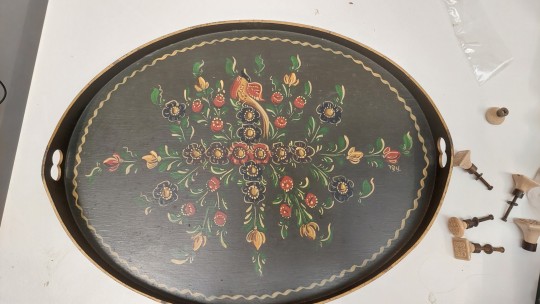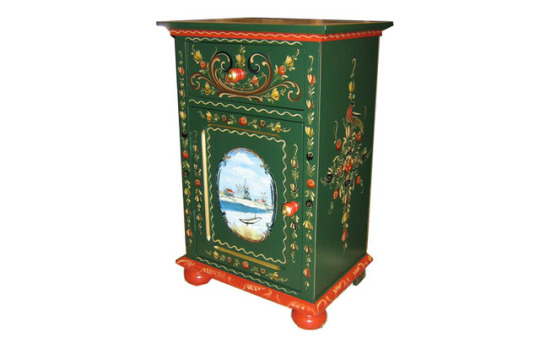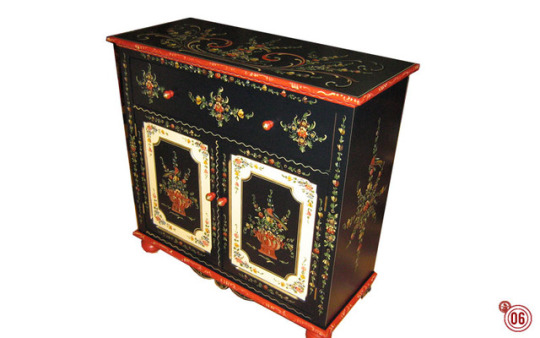#Hindelooper
Explore tagged Tumblr posts
Text


Folk art on a serving tray by Atelier Glashouwer (unsure if this is an original or a replica)
Time period 1970-1980 (if it was orginal)
Country of orgin: the Netherlands?
The back sticker text : t. Eghte Hielper Skilderwurk Hindelooper Handwerk ged. handelsmerk
#Hindelooper#W.H.Glashouwer#servingtray#folk art#second hand#thrifting#curiosities#objects#oddity#vintage#hand painted#1970s#1980s
0 notes
Text

Pieter Willem Sebes - Hindelooper interieur met moeder en kind
1 note
·
View note
Text
Nederlandse volksschilderkunst : het leren schilderen van Hindelooper, Assendelfter, Amelander, Zeeuwse en Staphorster motieven : Zuidema, J. (Jacques)

Nederlandse volksschilderkunst : het leren schilderen van Hindelooper, Assendelfter, Amelander, Zeeuwse en Staphorster motieven : Zuidema, J. (Jacques) https://www.avetruthbooks.com/2022/04/nederlandse-volksschilderkunst-het-leren-schilderen-van-hindelooper-assendelfter-amelander-zeeuwse-en-staphorster-motieven-zuidema-j-jacques.html?feed_id=13227
0 notes
Photo









Moodboard: traditional costume from Hindeloopen, the Netherlands.
#i really enjoy making these moodboards...! what town's costume is next? :) Land van Axel or Marken?#moodboard#the netherlands#hindeloopen#hindelooper#art#traditional costume#traditional living#folk art#folk clothing#dutch folk costume#dutch folklore#folklore art#dutch culture#fryslan#frysian#friesland#frysk#villagecore#farmcore#meadowcore#posted
602 notes
·
View notes
Video
youtube
Collectie Check, Check Mate – Jan Taminiau 2009 Geïnspireerd op de geruite stof en plooiingen Hindelooper streekdracht.
5 notes
·
View notes
Photo


Hindeloopen folklore painting
The painting of walls, furniture and small items has been done in Hindeloopen for about three hundred years. Very likely influencing the painting with flowers and curls on various background colors in Scandinavia. There is an upward trend in the antique pieces in terms of artistry and refinement in a distinct style and character. No longer needed of Hindelooper furniture began around 1800 when the small towns on the Zuiderzee coast quickly deteriorated and very quickly impoverished. Roosje Hindeloopen dates from this 19th century and has continued on the old craft base with authentic colors and motifs. Therefore not only for Hindeloopen, but for enthusiasts all over the world. A worthy piece of fame from Hindeloopen. The traditional collection can be subdivided into: Interior Furniture, Children's Furniture and Small Furniture. In addition, you can also contact us to have your own design, existing furniture (pieces) or unique object painted.
5 notes
·
View notes
Text
Is het Wangerooger(s) of Wangeroger(s)?
Geschreven door Dyami Millarson In de negentiende-eeuwse spelling kwamen dubbele o’s veelvuldig voor in open lettergrepen, terwijl dat in de tegenwoordige Nederlandse spelling niet het geval is. Echter, er zijn uitzonderingen bij plaatsnamen. De stadsnaam Hindeloopen spelt men met twee o’s en dientengevolge schrijft men ook Hindelooper(s) met twee o’s. Wangerooge (vernederlandst als Wangeroog)…

View On WordPress
0 notes
Text
Oldtimers Hindelooper Ruitjesdrop Mildzout
Chewy!

Nice and strong but not the most overpowering stuff, you could do more than one. I’m on the side of loving all licorice red and black. It may be the most divisive candy of all time. For some reason there is no middle ground with black licorice. You don’t have some once in a while - you either devour it and love the aftertaste or you run away from the touch of one piece.

Again, I’m a big fan of the old photos on the back to show that humans not robots made the candy. Here we have a happy old Dutchman.

Chewy and good, not the heavy salt style of Scandinavia but a more gentle Dutch approach.

I think that’s a horse.

Could be a deer.
Not sure why the black licorice freaks people out, its refreshing and not that far off a good mint. And it looks cooler than the red kind.
Thanks to Marlies van der Wel, director/animator of the sweet and beautiful short Jonas and the Sea.

1 note
·
View note
Text
Hollandse streekdrachten
Het idee om de vorm van een dijk te combineren met een Spakenburger kraplap heb ik achterwege gelaten. Eigenlijk is een kraplap namelijk plat. Pas als je hem aantrekt, en met een koord onder je oksel door en om je middel vastbind, krijgt hij zijn ronde vorm.
Ik ben de klederdracht weer meer in zijn geheel gaan bekijken.
Wat zie ik NU terug van de Hollandse klederdrachten?
Er zijn nog maar weinig mensen die rondlopen in de traditionele klederdracht. De jongste vrouw die nog in Spakenburger klederdracht rondloopt is inmiddels boven de zestig. Spakenburg is niet meer echt een vissersdorp..
De bloemenpatronen van de kraplap zijn wel nog te zien, maar nu in souvenirs theekopjes, sleutelhangers, etui’s, boekjes en noem maar op. Het is heel erg gericht op de toeristen. Toen ik jaren geleden op een mooie dag optrad in de Keukenhof met mijn klompjes aan en een Marks kostuumpje, werd ik constant door toeristen op de foto gezet. Ik was een bezichtiging; een onderdeel van vermaak van de toeristen.
Ik kan een nieuwe kraplap maken met daarop een ander patroon; een patroon van allemaal mensen, oftewel toeristen, die foto’s maken. Deze kraplap kan ik de mensen uit Spakenburg laten dragen. Zodat, wanneer deze mensen weer eens op de foto’s worden gezet, ze ‘zichzelf’ terug zien.
De kraplap zelf was vroeger onderdeel van de onderkleding. Het werd ‘hip’ om dit als bovenkleding te dragen. De kraplap werd steeds groter. Dit was ook bij oorkappen te zien, door middel van extra krullen aan de oorkap kon je zien of iemand meer welvaart had..
Ik zou de kraplap nog groter kunnen maken zodat hij je tenen aanraakt als je hem draagt.. of juist breder..
Vind ik het erg dat de Hollandse klederdracht verdwijnt? Doordat ik meer lees over de functie en betekenis van de klederdracht voel ik me er wel meer mee verbonden, maar niet zo dat het passend zou zijn om de kleding dagelijks te gaan dragen. Volgens A. Brunstig en H. van Zuthem, de auteurs van Het Streekdrachtenboek (2017) staat de kleding voor o.a degelijkheid. Ook geeft de klederdracht vaak aanwijzingen; of je protestants of katholiek bent, boer of visser, rijk of arm en of je in de rouw bent. Ik ben dit niet..
Wanneer ik de kleding aantrek trekt dit reacties op de Breitner, sommige lachen me uit en anderen vinden het heel mooi staan. Ik vind het zelf ook mooi, maar het zit niet heel comfortabel. Ik heb klederdracht uit Spakenburg, Hindeloopen en Zeeland mogen dragen.
De klederdracht hoeft wat mij betreft niet terug te komen, net zoals dat ik niet elke ochtend met mijn eventuele toekomstige leerlingen het Wilhelmus zal zingen. Ik wil met mijn werk niet iets vertellen of de geschiedenis van de mode, ook wil ik de kijker niet per se de benamingen per kledingstuk aanleren. Ik wil het laten zien aan de kijker.
De kleding zweeft nu in het niets, het word door niemand gedragen. Het is er nog wel, maar maakt het nog onderdeel uit van de identiteit van Nederland? Herkennen mensen de klederdracht nog en uit welke streek het komt?
Boven elke klederdracht die te zien is hangt dezelfde steen. Het verbindt de Spakenburger, Zeeuwse en Hindelooper klederdracht met elkaar. Alle staan ze onder ‘dreiging’ om te verdwijnen.
Of staat de klederdracht en de steen samen voor de druk van toenemend nationalisme? De klederdracht die verdwijnt, maar de ideeën van de échte Hollander niet?
0 notes
Photo

#cats#hindeloopen#hindelooper art#folk art#folklore#dutch folk art#the netherlands#dutch culture#hylpen#fryslân#cutecore#grandmacore#cottagecore#farmcore#warmcore#cozycore#cozy vibes
2K notes
·
View notes
Photo

Hindelooper Decorated Enamel Kettle
#hindeloopen#folk art#dutch folk art#hinderlooper art#fryslan#the netherlands#folklore#grandmacore#cottagecore#cosycore#farmcore#posted#cutecore#traditional art#traditional dutch
30 notes
·
View notes
Text
Wool and linen, those were the fabrics that made the Hindelooper women's clothes. Until the Dutch East India Company brought cotton from India in the late 17th and 18th century. And what kind of cotton! Sit with beautiful (hand) painted flower patterns and East Indian fur with interwoven diamonds. Fabrics with beautiful, bright colors, which even after many washes still looked beautiful and also did not shrink!
The Hindelooper women's costume went on its own course. The Hindelooper women combined flowers and diamonds. This resulted in a colorful whole. The color combinations, however, were bound by rules, because they had a symbolic meaning. Multicolored chests in combination with red-spun East Indian fur stood for a life phase without loss. Blue meant mourning.
In addition, it was immediately visible whether a Hindelooper woman was married or should have come across the real one. They all had pinned a sackcloth, but only the married women were allowed to wear the high white hat underneath. The silk shawl, which was added later, was also told that it had a signal function. The knot on the heart meant that the heart was occupied.
Of course there was also a difference between show and work. On Sundays and public holidays, the long jacket of sittets emerged. In the work clothes at most the sleeves and the breastflap of chintz.
The Hindelooper men held a more general fashion, which was also worn in Friesland and Holland. This consisted of a dark coat, trousers, stockings and hat in combination with a colorful jacket (wòlhimd) of chintz, cloth, silk or wool damask and a fine, white, batiste scarf. The Hylpers were more conservative, so they sometimes lagged behind fashion for years.
The children were dressed on Syn Hypers from birth. A different variant was associated with each new phase of life.
Around 1880 the Hindelooper definitively disappeared from the streets. All variations of the women's and men's men's and the different children's costumes can be seen in the museum.
1 note
·
View note
Photo

Hindelooper room Already in the 19th century people became aware of the special Hindelooper style. In 1878 the colorful Hindelooper room captured the hearts of the visitors of the World Exhibition in Paris. The room showed a typical Hindelooper interior and is known as 'typical Dutch'. After the World Exhibition, the removable room traveled all over the world.
0 notes
Photo

Titel Zwarte wollen rok met split middenvoor, afgezet met rood band, onderdeel van aankleding Hindelooper vrouw
Beschrijving Worp van zwarte wol in ribsbinding. bestaande uit 4 banen (ingeknipt). De rok is voor licht geplooid aan de tailleband gezet (om de 1.5 cm.). De rok is achter sterk geplooid (vergelijk smockwerk) en 5x doorgeregen.De tailleband is van zwart wollen keperband. Achter is de tailleband van zwart fluweel. Langs de onderkant is een 10, 5cm brede zoom naar buiten toe omgeslagen. Split middenvoor afgezet met, 3, 5cm brede, spitskeper in rood, beige en lichtblauw, van wol en katoen. Het split wordt in de taille gesloten door een koperen haak en oog.
Materiaal wol
0 notes
Photo

Jacket of the V&R 2007 collection, inspired by the hindeloopen folklore jacket.
The flowered sitsen jacket from Viktor & Rolf is now neatly next to the Hindelooper inspiration. The Indian chintz was, just like East Indies fur, initially brought in by the VOC and bought by the women of wealthy Hindelooper skippers who sailed for Amsterdam shipowners. Sits were expensive and excellent for showing off. Later a cheaper chintz was made in the Netherlands, not painted but printed.
0 notes